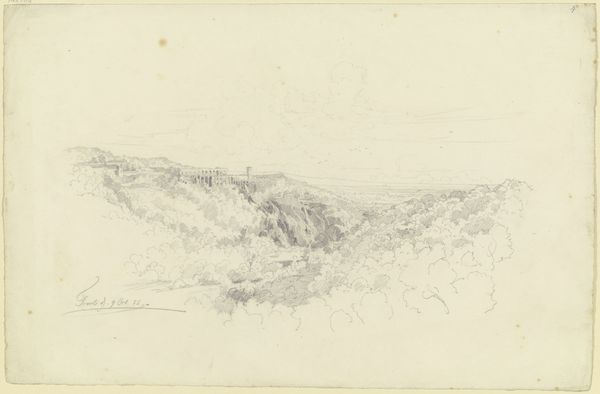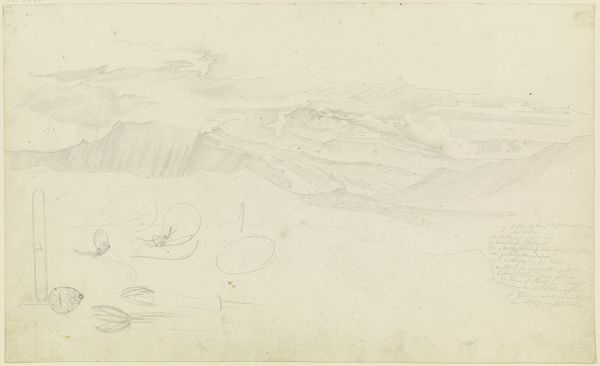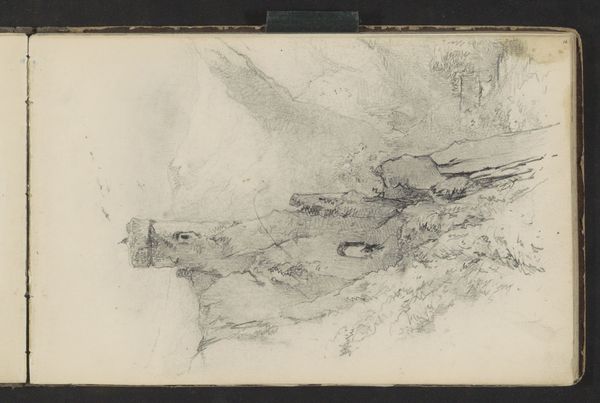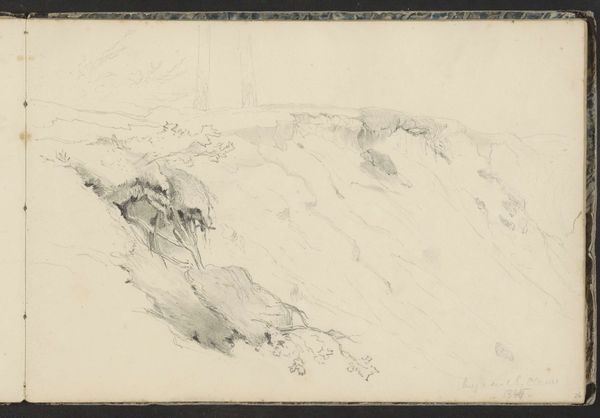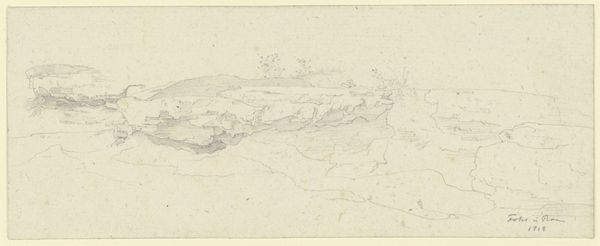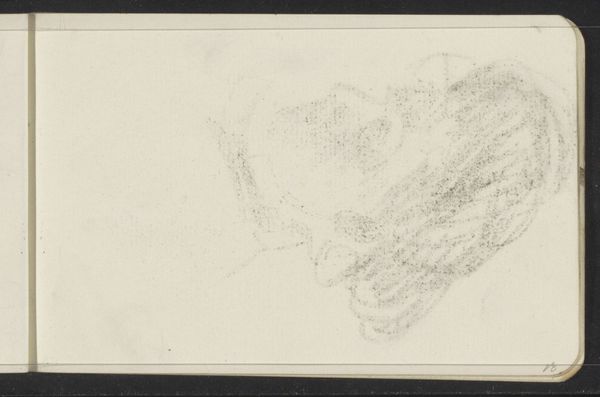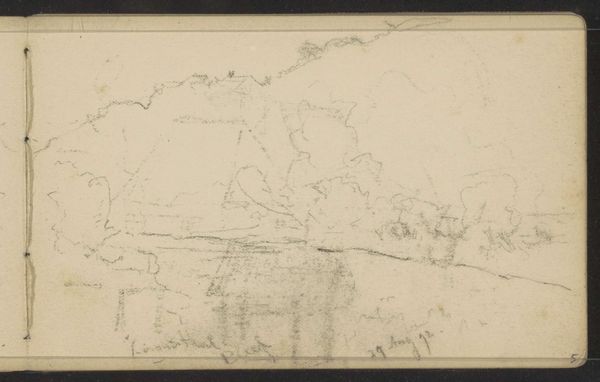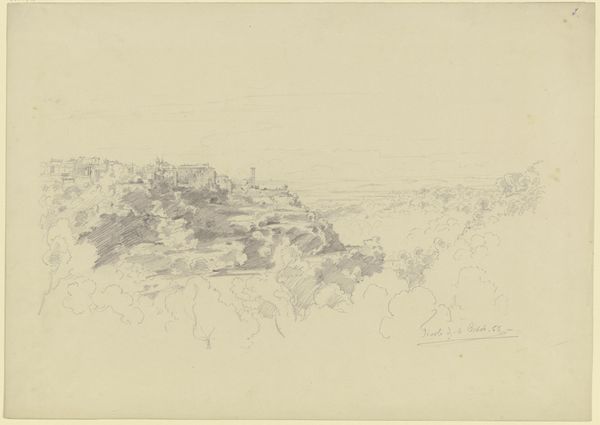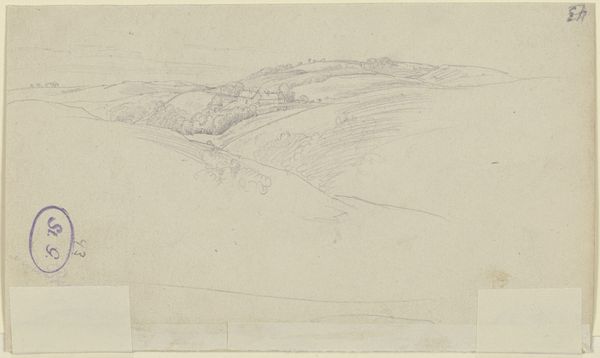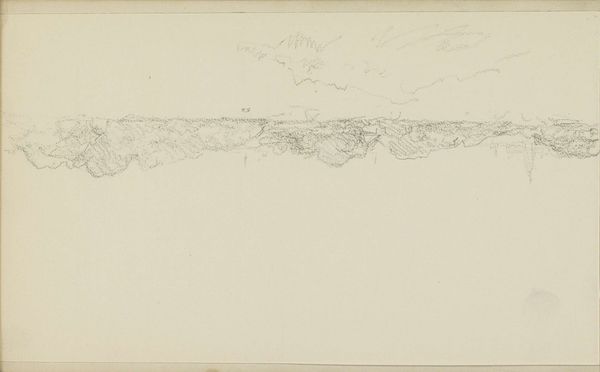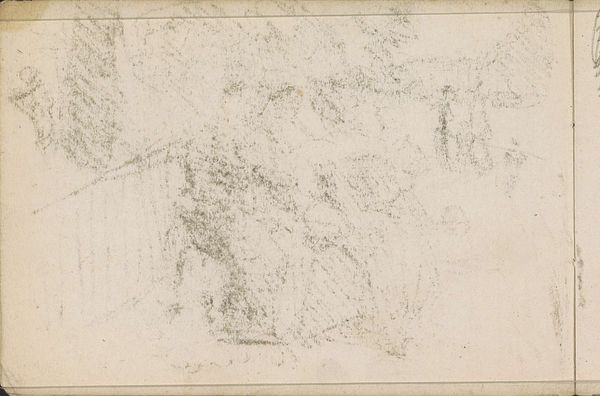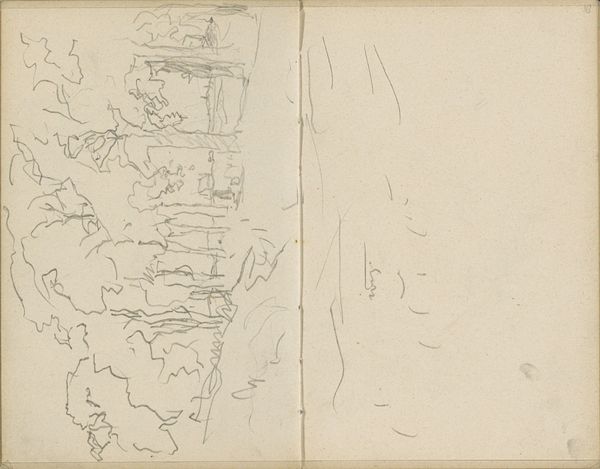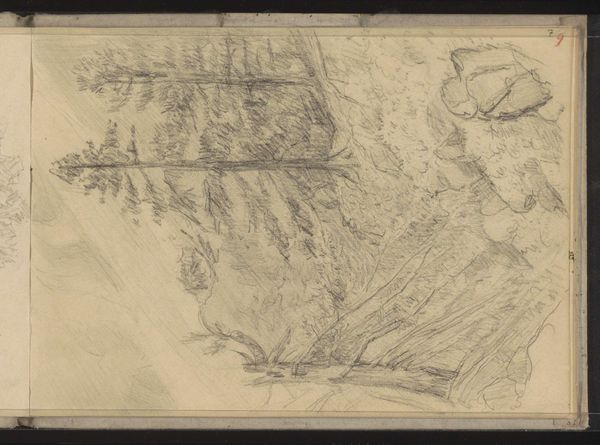
drawing, pencil, architecture
#
drawing
#
landscape
#
romanticism
#
pencil
#
architecture
Copyright: Public Domain
Curator: Looking at this pencil drawing by Carl Morgenstern, you are observing his depiction of "Tivoli mit dem Tempel der Vesta in starker Untersicht," which translates to "Tivoli with the Temple of Vesta in Strong Under-View". It's held in the Städel Museum collection. Editor: The dramatic angle is striking. I’m immediately drawn into the depth, with a sense of almost falling into that dark, shadowy chasm. There's an awe-inspiring romantic mood, an interplay of light and sublime power, wouldn’t you agree? Curator: Precisely. The choice of the Romantic landscape genre perfectly encapsulates that period’s fascination with nature's sublime power and its effects on human emotion. The Temple of Vesta, positioned high above, is the architectural embodiment of humanity seeking a symbolic position with the power of nature. Editor: Speaking of symbols, I see a careful balance between the natural and the constructed. How might this placement, nature juxtaposed against architecture, reflect on 19th-century perceptions? Is this merely an architectural drawing or does it say more? Curator: This placement absolutely speaks to the 19th-century's complex relationship with antiquity and the natural world. Tivoli itself, a site celebrated for its beauty since ancient times, represents an idealized past, a continuity that 19th-century viewers sought. Morgenstern strategically places the temple—a vestige of that past—at a point of visual stability above the unruly waterfall. A kind of dominance, no? Editor: A symbolic ordering of the world, perhaps. The drawing is certainly of architectural features, but what resonates is less documentation than staging. The wildness, that Romantic sensibility and compositional drama—the light and shadow—it all underscores something more powerful than architectural detail. Curator: The visual emphasis of Romanticism lies in invoking those deeper senses. Here Morgenstern successfully presents more than a simple picturesque view of a celebrated place; it embodies cultural memory, long historical lineage and deep continuity through architectural imagery. Editor: Indeed. It makes me think about how we frame even the natural world to fit our narratives. Looking at it this way encourages you to examine assumptions within visual tradition. Curator: For me it emphasizes how architectural structures carry so much symbolic weight throughout the centuries. How art becomes an ongoing reflection of changing cultural attitudes to the relationship of humans to the landscape.
Comments
No comments
Be the first to comment and join the conversation on the ultimate creative platform.
